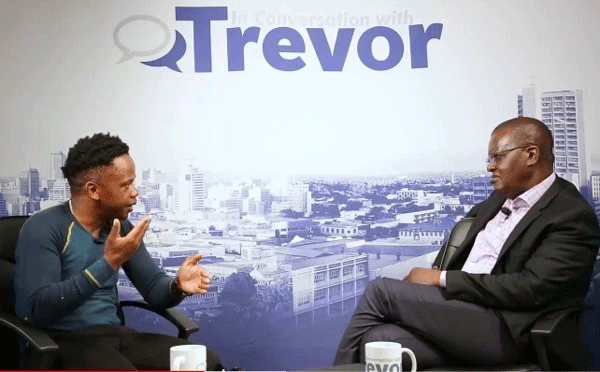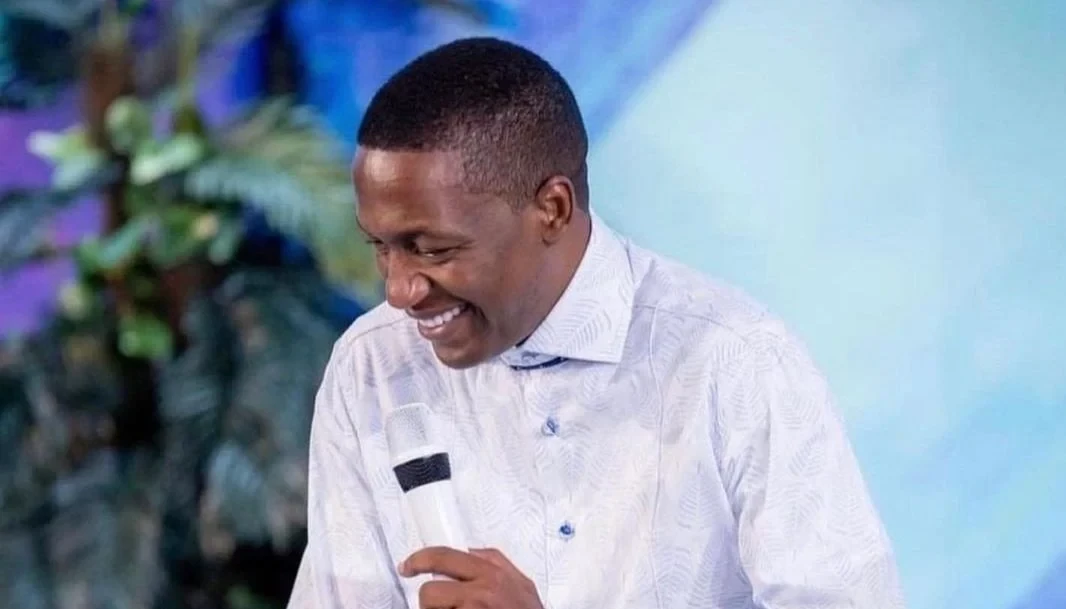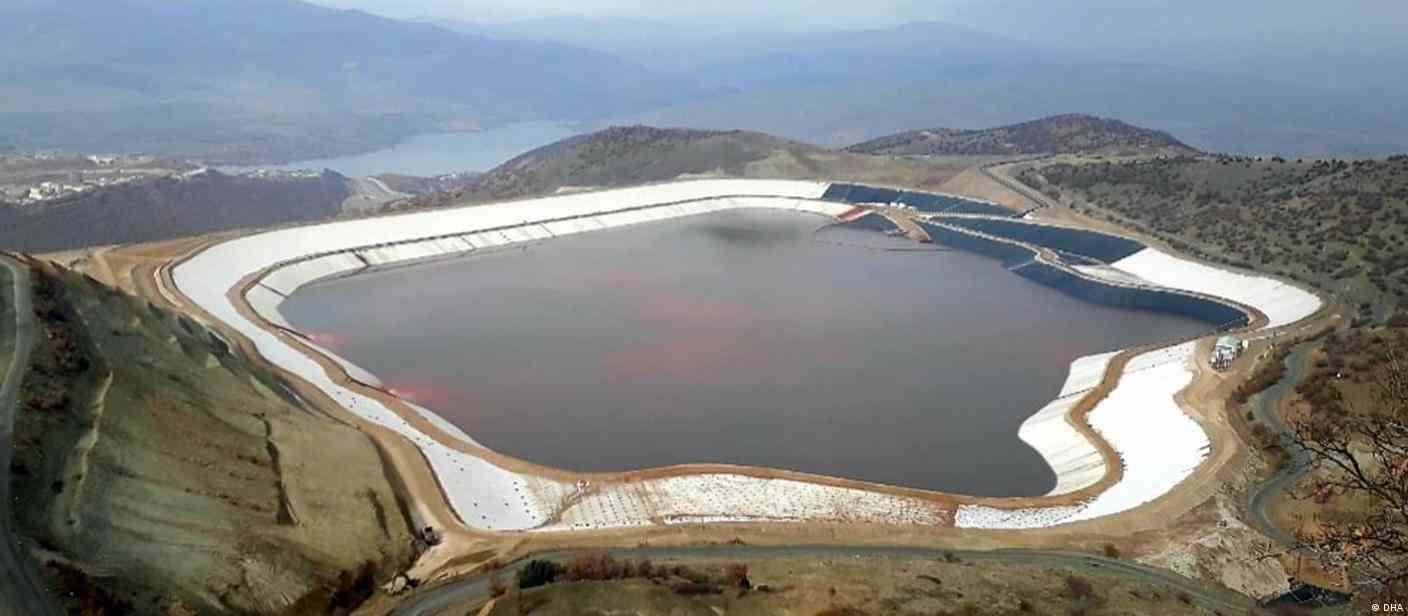
Famed Harare snake catcher Chawatama Marimo says he taught himself how to handle the reptiles because he was passionate about nature.
Marimo (CM) told Alpha Media Holdings chairman Trevor Ncube (TN) on the platform In Conversation with Trevor that he started experimenting with handling animals at a very young age.
He spoke about his close encounters with snakes and things people have to do when they encounter snakes.
Below are excerpts from the interview.
TN: Chawatama “Chawaz” Marimo, welcome to In Conversation With Trevor.
CM: Hello Trevor, how are you?
TN: Very good. Delighted to have you. You don’t have snakes do you?
CM: No hahaha. This is the last place I thought I’d come to. Remember when I came to your house?
- Chamisa under fire over US$120K donation
- Mavhunga puts DeMbare into Chibuku quarterfinals
- Pension funds bet on Cabora Bassa oilfields
- Councils defy govt fire tender directive
Keep Reading
TN: So you came to my place because overnight we were told there was a snake.
My first reaction by the way was to suggest to kill it.
Then my wife said we should not kill it, but call Chawaz to come and rescue the snake.
We will show the video of you catching it.
CM: You still have got that video?
TN: Oh yes. In it how I am so terrified, and you are so cool, and we will show more videos of you catching snakes.
So Chawaz, the snakes which you play around with, which you rescue, in Zimbabwe the statistics that I have are that about 3 000 people a year get bitten by snakes.
Of those 3,000, about 20 die. Worldwide, the World Health Organisation (WHO), says three million people get bitten by snakes every year, mostly in Asia.
Out of those three million, 138 000 people actually die.
Where do you get the guts to be rescuing and handling these things in the manner that you do as we will show in the videos that we have?
CM: I think when you say guts, it comes mostly with knowledge because fear is a lack of knowledge.
So when you know more about something, there is a bit of fear that goes away because I understand them more than most people.
TN: What got you to start rescuing and catching snakes?
CM: My story is a very long one.
TN: Yeah? Let’s share it! My hope is that when you share your story we will have a lot of people out there wanting to be snake catchers like you!
CM: I would not recommend that to be honest hahaha.
TN: So how did it all start?
CM: When I left school, I grew up with a very strict father. I grew up in what was a bit more like a boot-camp.
TN: That is how you were raised?
CM: My father was like an army guy.
He was not in the army or anything like that, but he was a very tough man towards us.
So when I left school I went into the bush to work on a mine.
He owned the claims and everything.
He said that is what I would be doing with my life.
So I went there working in the bush and everything.
I worked with a lot of what we call makorokoza these days.
That was back in the 1990s. Working with these guys digging mine shafts and everything.
TN: Where was this Chawaz?
CM: In Concession in Mazowe.
We used to come across a lot of snakes, and you know living there I used to have a lot of books I used to read, Bhundu books of snakes and all these books.
I naturally had a fascination with animals when I was a kid.
I was one of those kids who used to come to school with a tortoise, or a frog or something and I always used to have teachers calling my parents!
I started to notice a lot of snakes getting killed by these guys in the mine-shafts and everything.
TN: So you had a natural liking for animals?
CM: Yes.
TN: Frogs, snakes at an early age?
CM: Yes that is how I was.
TN: Do you know where this came from?
CM: I think it is more of the kind of thing where if you have a kid, and you see this kid loves music or soccer, that is how I was with animals.
Like when I am catching snakes, it is not a forced thing, it feels natural, when I do it I feel like I am born to do it.
I literally started to experiment with catching cobras, and puff-adders and all those snakes.
Pinning them, finding ways of catching them safely, moving them from the mine-shaft and taking them back to the bush.
One thing I know was that I was very lucky, that is one thing I know, very lucky to be alive.
TN: Why do you say that?
CM: This is because no one taught me how to do it correctly.
So as I was doing it I would make a few mistakes, where I would almost get bitten and then would have to make adjustments and learn.
I evolved slowly.
Early in 2000 I came over to Harare.
When I moved into Harare I was very surprised to meet a white guy, who was telling me that there were a lot of snakes in Harare, and that he was removing a lot of snakes in Harare.
I said to him that he must be joking because I believed that snakes are found in the bush.
So I joined him, just for a short time.
He started showing me places. We would go to Mabelreign, Mount Pleasant and all these places and I was so surprised at the number of snakes that I saw.
There were actually more snakes in built up areas, than in the bush.
Mostly cobras. That is how I was introduced to catching snakes in Harare by this man.
TN: Do you remember his name?
CM: His name is Ben Vermillion. I am a self-taught snake catcher, but I met this guy and he started showing me around Harare.
TN: I see. So you were not trained, you taught yourself?
CM: Yes, so the snakes that I started dealing with mostly were pythons.
Remember, traditionally people do not believe in killing pythons, so I had to find ways of catching these pythons and moving them out of the places where they were not wanted.
I started off basically with a lot of pythons.
The venomous snakes I would catch here and there, but the pythons are the number one snakes that I started off with.
TN: What is the cultural connection with pythons?
CM: You know things have changed so much. If you look at things back then, in our culture we had a lot of respect for things.
There are certain animals we know we cannot hunt.
Trees we know we are not supposed to chop down.
So, that is the same with pythons.
People would kill any other snake, but when they came across a python they would respect it.
So they had to find a way of moving it out of the area.
Back then, if somoene killed a python, they had to consult the chief of that area and would pay a fine to the chief.
TN: So it is almost like a conservation of some sort? Which is culturally linked?
CM: Yes. I believe that before white people came to Africa our people were the biggest conservationists of all time; but because of the way people have changed so much, we are not respecting certain things anymore.
Like I said, back then people had stories.
For example, when we were growing up we were told not to sit on the road because we would get blisters or something, but back then those things were so engrained in us.
Like if we were to eat a certain part of an animal we would get sick or something.
However, that was conservation in our own way, because if you look at it you will see that a lot of trees were still there.
They were not getting chopped down because of beliefs.
Like you would be told if you chopped down a certain tree you would get bad luck, but that was conservation in a way that people understood.
TN: You say you are self-taught?
Apart from doing it practically and picking up snakes and making mistakes have you had to read?
Have you had to enroll on a course of some sort?
CM: No courses whatsoever. However, what I do because I am a very curious person, I want to know more about it.
For example, when I was catching snakes initially, and I would see a puff-adder, I would wonder why it is coloured the way it is, why its head was shaped a certain way.
Then I would go back to the book and try to figure things out. That is how I used to learn.
TN: Do you remember your first real encounter with a snake where like you say, you were lucky to get out alive?
Can you describe one of those incidents?
CM: I remember once, the workers at the mine, they called me as there was a big puff adder they encountered.
TN: Was this when you were 14 years old?
CM: I was at this time about 18 years old.
There was a puff adder crossing a fence line, and they called me.
I went there.
As usual I took a stick and pinned it and grabbed the head of the snake.
On this occasion I grabbed it too early, and it turned around and just nicked my finger nail.
A puff adder bite is one of the most painful experiences for anyone?
TN: Dangerous? Painful?
CM: The beauty about puff adders is that they rarely kill you, but you will lose your finger or you will lose your hand if you are not treated correctly.
I have had instances where I was not even catching a snake and a snake shows up.
That is a funny experience. I was fishing at a place called Jambwa Dam.
I borrowed a long canoe. You know those long canoes?
TN: Yes.
CM: It was more like a kayak.
So the guy said to me to get the kayak in the chicken run, as long as I did not mind cleaning out the chicken droppings from it, I could take it and use it in the dam.
So I took it to the dam and washed out the chicken droppings, put my fishing tackle inside and rolled out to an anthill on the other side of the dam.
I was casting my fishing rod and I would hear this sound like a rustling sound, and I wondered what it was. I ignored it.
The last time I checked and looked again, there was a huge black mamba sitting on the boat with me, it was on the edge of the boat.
Every time I would do something it would react to what I was doing.
So I looked at it and it was looking at me, then fortunately it was hanging on the ribbing of the boat. So when it would sit up straight it would lose balance and fall into the water, and then it swam off.
There were people sitting on the bank of the dam fishing.
They all ran away after seeing the black mamba.
If that snake had bitten me in the middle of the dam on the other side I would never have been able to make it back.
It just shows you that a snake’s intention is not always to bite you, they will only bite as a last resort.
The figures that you were telling me about; have you noticed that a lot of people get bitten, but if you look at the figures of people who actually die is a low number.
TN: So what is the right way to approach a snake? You see snake you run away?
You are close to it and about to step on it. What is the best way of handling the encounter?
CM: I always say, the safest snake is one that you leave alone!
For example, you are walking and you come across a snake, the best thing you can do is to give the snake space.
That is all a snake wants. Give it space, whether it is two metres, three metres or four metres, if you give a snake space it will leave you alone.
Just by looking at the snake, stand still and allow it to do what it wants to do and it will move away from you.
This is because snakes naturally fear predators.
Anything bigger than a snake, a snake will fear you.
TN: Should I run away?
CM: No. Just stand still. Or if you can, just move slowly backwards, it is not a problem.
A snake will only bite someone who is actually confronting it.
So let’s say, you see the snake and you carry on approaching it, it will feel you are a predator and want to attack it so it will attempt to defend itself.
That is how people get bitten.
- “In Conversation With Trevor” is a weekly show broadcast on YouTube.com//InConversationWithTrevor. Please get your free YouTube subscription to this channel. The conversations are sponsored by Nyaradzo Group.










